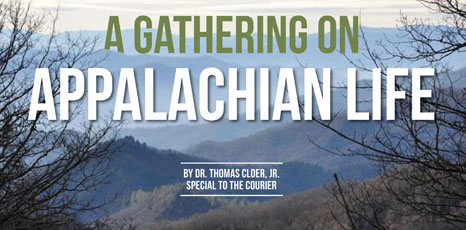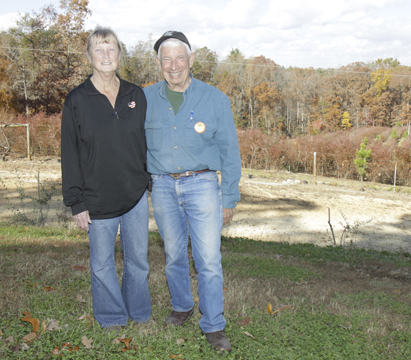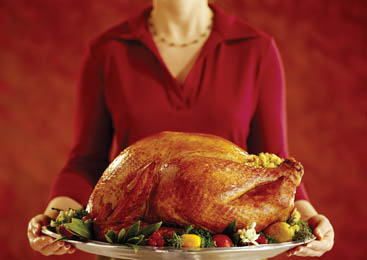Category Archives: Lifestyles
Dare To Dream — Martin Luther King Jr. 1929-1968
 A look at the life and influence of Dr. King
A look at the life and influence of Dr. King
Martin Luther King, Jr. played a pivotal role in race relations in the United States for nearly a decade. He helped secure the end of legal segregation of African-American citizens, created the Civil Rights Act of 1964 and served as a source of inspiration for black individuals across the globe.
Dr. King did not begin his life as a crusader or public figure. He had much more modest beginnings in rural Atlanta. Born Michael King, Jr., he was the middle child of Michael King, Sr. and Alberta Williams King. Michael King, Sr. served as pastor of Ebenezer Baptist Church upon the death of his father-in-law, who was the church’s prior pastor. At this point, the elder king decided to change his name to Martin Luther to honor the famed Protestant religious leader. His son soon decided to adopt the name as well.
A religious family, the Kings tried to shield their children from the realities of racism that were
A Gathering On Appalachian Life

New festival coming to Pickens Feb. 28
Just before Christmas 2014, local cultural enthusiast Betty McDaniel had a visit from the Ghost of Appalachia Past. It started late in the night, and she was visited at 1, 2, and 3 o’clock by the  Ghosts of Appalachia Past, Present, and Yet to Be. At first, her husband, Ed, thought it mere indigestion, a fragment of an underdone potato or a blurb of mustard.
Ghosts of Appalachia Past, Present, and Yet to Be. At first, her husband, Ed, thought it mere indigestion, a fragment of an underdone potato or a blurb of mustard.
However, early the next morning, after her visions, Betty began to startle everyone and set things in motion. Her vision has resulted in a Pickens County first — “A Gathering on Appalachian Life,” a festival of activities to be held Feb. 28 at the Hagood Community Center (also known as the Pickens Senior Center), with registration at 8:30 a.m. and first session at 9 a.m.
Betty began to react to her visions by contacting major organizations that might
New Year food superstitions
 Grapes: Dating back to the early 1900s, people in Spain, Portugal, Venezuela, Cuba, Mexico, Ecuador, and Peru consume 12 grapes at midnight — one grape for each stroke of the clock. Each grape represents a different month, so if for instance the third grape is a bit sour, March might be a rocky month. For most, the goal is to swallow all the grapes before the last stroke of midnight, but Peruvians insist on taking in a 13th grape for good measure.
Grapes: Dating back to the early 1900s, people in Spain, Portugal, Venezuela, Cuba, Mexico, Ecuador, and Peru consume 12 grapes at midnight — one grape for each stroke of the clock. Each grape represents a different month, so if for instance the third grape is a bit sour, March might be a rocky month. For most, the goal is to swallow all the grapes before the last stroke of midnight, but Peruvians insist on taking in a 13th grape for good measure.
Cooked Greens: Cabbage, collards, kale, and
New Year traditions from around the world
Scarecrow burning — Ecuador
To banish any ill fortune or bad things that happened in the past year, Ecuadorians set fire to scarecrows filled with paper at midnight on New Year’s Eve. They also burn photographs of things that represent the past year, which leads us to believe that New Year is just a thinly veiled excuse for Ecuadorian pyromaniacs to set things on fire.
Round things — Philippines
In the Philippines New Year is about one thing and one thing only — cold hard cash. Hoping to
Keep your resolutions
As we prepare to usher in 2015, no doubt many of us have compiled a list of New Year’s Resolutions that we plan to enact the moment we open our eyes and our feet hit the floor on January 1.
Losing weight, getting in shape, quitting smoking, saving money, organizing and decluttering are all timeless, popular and laudable resolutions. The reason so many people give up on their resolutions is simple: change is difficult, and it requires constant practice.
Rome, as they say, was not built in a day. If you are serious about making lasting changes in your life this year, experts offer advice toward achieving your goals — whatever they might be.
1. Choose a Specific,
Realistic Goal
Every year, millions of adults resolve to “lose weight” or “get in shape” during the next year. Instead of selecting such an ambiguous and vague goal, focus on something more concrete and achievable. For example, you might commit to losing 5 or 10 pounds or running a 5K. Choosing a concrete, achievable goal also gives you the opportunity to plan exactly how you are going to achieve your goal over the course of the year.
2. Stick With Just One Resolution
While you may have a long list of potential New Year’s Resolutions, studies suggest that you should pick just one and focus your energies on it rather than spreading yourself too thin among a number of different objectives.
3. Don’t Wait Until New Year’s Eve
Planning is an essential part of achieving any goal. Experts suggest that you should spend some time planning out how you will tackle a major behavior change. You can start by writing down your goal, making a list of things you might do to achieve that goal and noting any obstacles that might stand in your way.
4. Start With Small Steps
Taking on too much is a common reason why so many New Year’s Resolutions fail. Dramatically slashing calories, over-doing it at the gym or radically altering your normal behavior are sure-fire ways to derail your plans. Instead, focus on taking tiny steps that will ultimately help you reach your larger goal.
If you’ve resolved to run a marathon, start out by going for a jog two or three times a week. Decide to take the stairs in lieu of riding an elevator. If you are trying to eat healthier, start by replacing some of your favorite junk foods with more nutritious foods. Maybe you swap one item of junk food for a healthier option. While it may seem like a slow start, these small changes make it easier to stick to your new habits and increase the likelihood of long-term success.
5. Avoid Repeating Past Failures
Another strategy for keeping your New Year’s Resolution is to not make the exact same resolution year after year. If people think they can do it they probably can, but if they’ve already tried and failed, their self-belief will be low. If you do choose to reach for the same goals you’ve tried for in the past, spend some time evaluating your past results. Which strategies were the most effective? Which were the least effective? What has prevented you from keeping your resolution in past years? By changing your approach, you will be more likely to see real results this year.
6. Remember That Change Is a Process
Those unhealthy habits that you are trying to change probably took years to develop, so how can you expect to change them in just a matter or days, weeks or months? It may take longer than you would like to achieve your goals, but remember that this is not a race to the finish. Once you have made the commitment to changing a behavior, it is something that you will continue to work on for the rest of your life.
7. Don’t Let Small Stumbles Bring You Down
Encountering a setback is one of the most common reasons why people give up on their New Year’s Resolutions. If you suddenly relapse into a bad habit, don’t view it as a failure. The path toward your goal is not a straight one, and there are always going to be challenges. Instead, view relapses as learning opportunities.
If you are keeping a resolution journal, write down important information about when the relapse occurred and what might have triggered it. By understanding the challenges you face, you will be better prepared to deal with them in the future.
8. Get Support from Your Friends and Family
Yes, you’ve probably heard this advice a million times, but that is because the buddy system actually works. Having a solid support system can help you stay motivated. Explain what your goals are to your close friends or family and ask them to help you achieve your objectives. Better yet, enlist the help of others by joining a group that shares your goal.
9. Renew Your Motivation
During the first days of a New Year’s Resolution, you will probably feel confident and highly motivated to reach your goal. Because you haven’t really faced any discomfort or temptation associated with changing your behavior, making this change might seem all too easy.
After dealing with the reality of dragging yourself to the gym at 6 a.m. or gritting your teeth through headaches brought on by nicotine withdrawal, your motivation to keep your New Year’s Resolution will probably start to dwindle. When you face such moments, remind yourself of exactly why you are doing this. What do you have to gain by achieving your goal? Find sources of inspiration that will keep you going when times get tough.
10. Keep Working on Your Goals
By February, many people have lost that initial spark of motivation that they felt immediately after making their New Year’s Resolution. Keep that inspiration alive by continuing to work on your goals, even after facing setbacks. If your current approach is not working, reevaluate your strategies and develop a new plan.
Consider keeping a resolution journal, where you can write about your successes and struggles. Write down the reasons why you are working toward your goal so that you can refer to them during times when you feel uninspired and unmotivated. By sticking with it and working on your goal all year long, you can be one of the few able to say that you really did keep your New Year’s Resolution.
The evolution and many faces of Christmas

Many people prepare for the arrival of Christmas months in advance. The first traces of wrapping paper and decorations arrive in stores as early as September, transforming the holiday into a much more secular celebration than its modest Christian beginnings.
Despite Christmas being an important date in the lives of today’s Christians, the holiday failed to gain prominent status until relatively recently. Research indicates that as late as the 19th century, Christmas was not even a legal holiday requiring a day off from work. That’s why 19th century readers of the classic Christmas tale, “A Christmas Carol,” were not shocked at Bob
Tidbits to put you in the holiday spirit
The holiday season has arrived, and millions of people across the globe will be celebrating Christmas with their families and friends. The following are some interesting tidbits to share with your loved ones this holiday season.
• Each year, more than three billion Christmas cards are sent in the United States alone.
• In 350 AD, Pope Julius I, bishop of Rome, proclaimed December 25 the official celebration date for the birth of Jesus Christ. Many historians and theologians have surmised that Christ
Happy environment, happy farm

Courtesy Caitlin Herrington/The Journal
Pictured with his wife, Ann, Happy Berry farm owner Walker Miller was honored recently as the Carolina Farm Stewardship Association’s Farmer of the Year.
The Happy Berry wins sustainable farming award
By Caitlin Herrington
Courtesy The Journal
cherrington@upstatetoday.com
SIX MILE — hose who have been to The Happy Berry in the height of summer to pick blueberries or blackberries know it’s easy to work up a sweat on the 20-acre farm.
But what many don’t know is that spot is, on average, nine degrees warmer than a half-mile down the road — and that’s just the way owner Walker Miller planned it.
Miller and his wife, Ann, have spent the last 35 years working to get their farm to produce crops year-round while interfering with the environment as little as possible. Choosing a plot of land less likely to freeze was just the first of many selective decisions, and their efforts were
Football Frenzy Extra – Palmetto State-ment

Kerry Gilstrap/Courier
Clemson senior defensive end Vic Beasley and the Tiger defense terrorized South Carolina quarterback Dylan Thompson all day Saturday. Beasley had two sacks and forced a fumble in his final game in Memorial Stadium.
Freshmen help Tigers put emphatic
end to Gamecocks’ rivalry streak
By Jonathan Gantt and Colby Lanham
Clemson Athletic Comm.
CLEMSON — Enough was enough for Clemson, and especially its seniors.
And three freshmen who don’t know what losing to South Carolina (6-6) is like did their part to keep it that way for at least another year.
After five straight years on the short end, Clemson (9-3) finally broke through and won the Palmetto Bowl by a 35-17 score on Saturday, bringing an end to a losing streak that kept many from realizing just how outstanding the program has been over the last several years.
New to the rivalry, quarterback Deshaun Watson (14-19 passing for 269 yards and four total
Thanksgiving Leftovers

Turkey day is over, but you still have enough food
to feed an army. Use these idea to help you get
the most out of your holiday.
By Olivia Fowler
For the Courier
ofowler@thepccourier.com
So the Thanksgiving feast has been eaten, the company has departed, the house is a shambles and you don’t feel like cooking.
You have options — freeze your leftovers in usable portions, go out to eat or recycle the leftovers into totally new meals.
Although it’s wonderful on Thanksgiving, nobody wants to repeat the same meal over and over




























